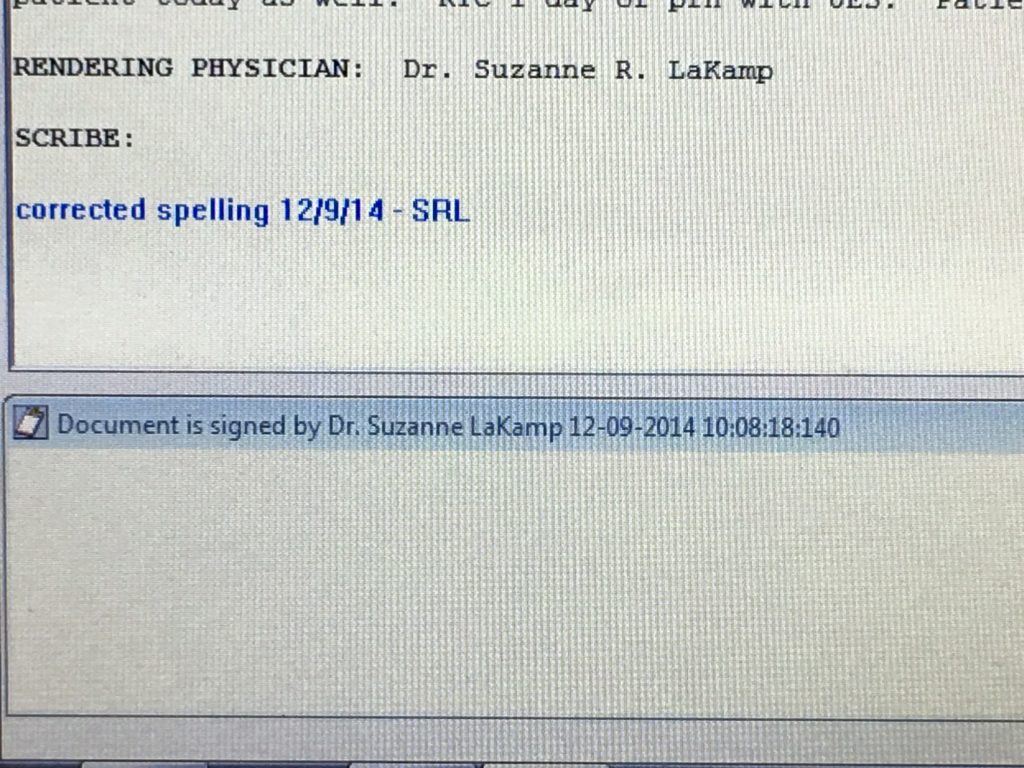By Suzanne LaKamp, OD, FAAO

July 5, 2017
When an OD joins a practice, there is a learning curve. The doctor must learn the systems of the office, the practice culture, and get to know the support staff and patients. If the doctor is also a new graduate from optometry school, there is additional learning that takes place in day-to-day experience with patients.
Since residency, I have worked in MD-OD ophthalmology practice settings. Each practice spent up to three months onboarding and training the newest associate doctor. During this three-month period, the new optometrist learns how the practice operates, his or her role within the practice, and develops a skill set specific to the practice type. The training can be viewed as almost an informal fellowship.
I currently work as an associate in a shared OD-MD practice, which uses a structured onboarding program for ODs new to the practice. New OD staff members are given a supervisory doctor for the first three months, who sits in on some of the new doctor’s patient visits. The supervising doctor at my current practice is an optometrist with over 17 years of experience in refractive surgery.

A chart, on which both Dr. LaKamp, and her onboarding supervisory doctor, need to sign off. Dr. LaKamp says it helps to have a doctor on staff serve as the supervisor of ODs new to the practice, including double-checking the new doctor’s charts.
Select Supervisory OD
The hiring and interview process is when doctors are selected based on characteristics deemed compatible with current staff and the work culture. The supervising doctor was chosen on the basis that we have the same position in the practice, and are counterparts for patient care.
Establish Learning Goals
During the initial stages of onboarding, it is important for the new doctor to learn about his or her job responsibilities, spend time at the new work station or desk, review company policies and procedures, and spend time getting to know the team. Later stages of onboarding include one-on-one time with department heads and each of the doctors. It is invaluable to observe and work alongside senior doctors, especially for the more complex patient cases.
Create Program
New associates to the practice will spend time with each department and with each doctor. The associate doctor should experience all departments to see how the practice runs as a whole. The new doctor may spend a few weeks working closely with each doctor at the practice, and much longer–months–with a supervising doctor. The new associate can also learn more about patient care from working with the other doctors. Doctors with years of experience are a wealth of knowledge. The learning should not stop after the completion of onboarding.
Double-Check New Doctor’s Charts
The supervisor optometrist periodically audits the charts of the new OD. A chart audit is when someone reviews a previous patient encounter and medical record looking for inaccuracies, grammatical errors or missing items. To begin charting, and to help familiarize me with the new EHR, I started scribing for the other doctors during patient encounters for the beginning stages of onboarding. When it came time for me to start seeing patients, the other doctor, or clinic supervisor, would then scribe for me and provide helpful feedback.
The onboarding then transitioned to me seeing patients by myself. The charts were then audited by the supervising doctor, and we would discuss the cases and documentation. We typically went over charts daily, and then discontinued the practice when both doctors felt comfortable with the training. Chart audits should be completed weekly at a minimum in any practice. It is also important to complete self-audits. Chart edits should be made in a different color from the original record, along with the changes that were made, and the date. The doctor has to review and re-sign the record when complete.
Provide Written Job Aids
I was provided with an onboarding binder in which I had a schedule for the first few months of training. There was also contact information for the leadership team, as well as the employee handbook. I had copies of pre- and post-operative surgical care information and surgery consents. It is important to review the information patients see.
When I first joined the practice, I would listen to my supervising doctor, and take notes on his communication with patients. I would record specific verbiage and ways of saying things to patients, such as how to communicate a diagnosis. I spent time reviewing practice pamphlets, handouts we give to patients and the information on our practice web site.
Check in with New OD
During the initial three months, there were a few quick one-on-one, informal meetings with the supervisor of clinic operations about every couple of weeks to gauge progress of training, to see if there were questions, and to monitor how I was faring. I always felt looked after, and that my employer wanted me to succeed. Our clinic supervisor, who directs the onboarding, is excellent at taking care of employee needs and promoting confidence during training.
Learn Practice Culture: Get to Know the Team
The biggest challenge during the first few months for me was learning the work culture. It is easy to learn processes and job skills. It takes much more time to integrate into a new work environment and join a team, a skill not taught in the classroom. For my onboarding, the scheduled one-on-one time with various team members and doctors started the relationship-building immediately.
I thankfully work with positive, welcoming and affable people. I also have a leadership team that invests in people. We enjoy social activities scheduled after-hours throughout the year. Learning about your colleagues outside of work strengthens relationships, which improves the workplace. Taking the time to know your team is a gradual process, and one in which there is continual learning. I value my colleagues, and am truly grateful for them.
 Suzanne LaKamp, OD, FAAO, is an associate at Durrie Vision in Overland Park, Kan. To contact: dr.suzanne.lakamp@gmail.com
Suzanne LaKamp, OD, FAAO, is an associate at Durrie Vision in Overland Park, Kan. To contact: dr.suzanne.lakamp@gmail.com

























